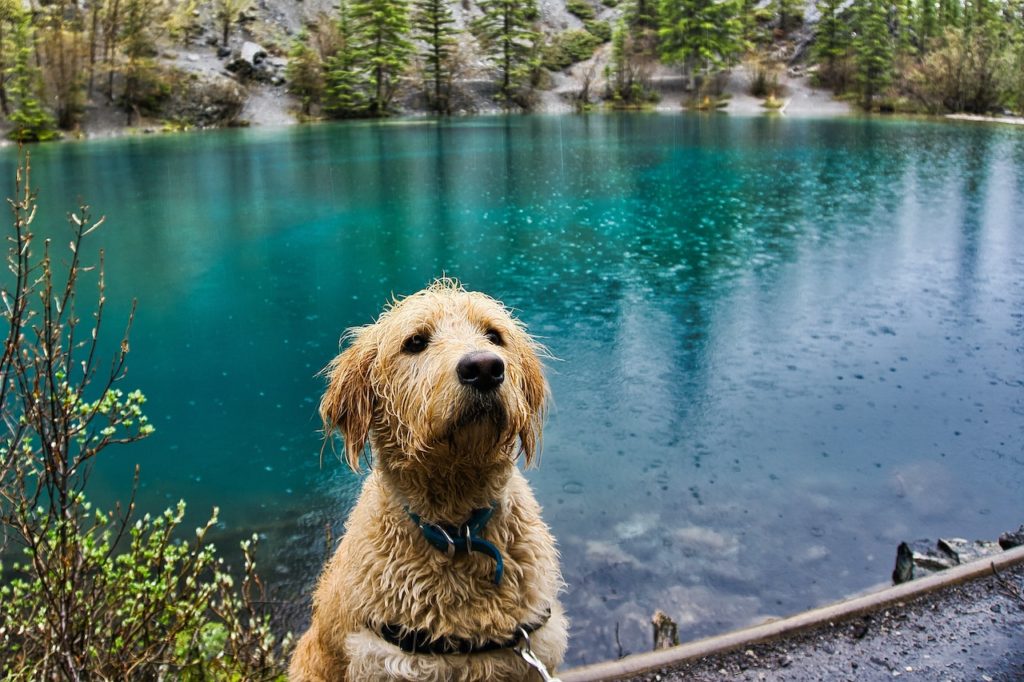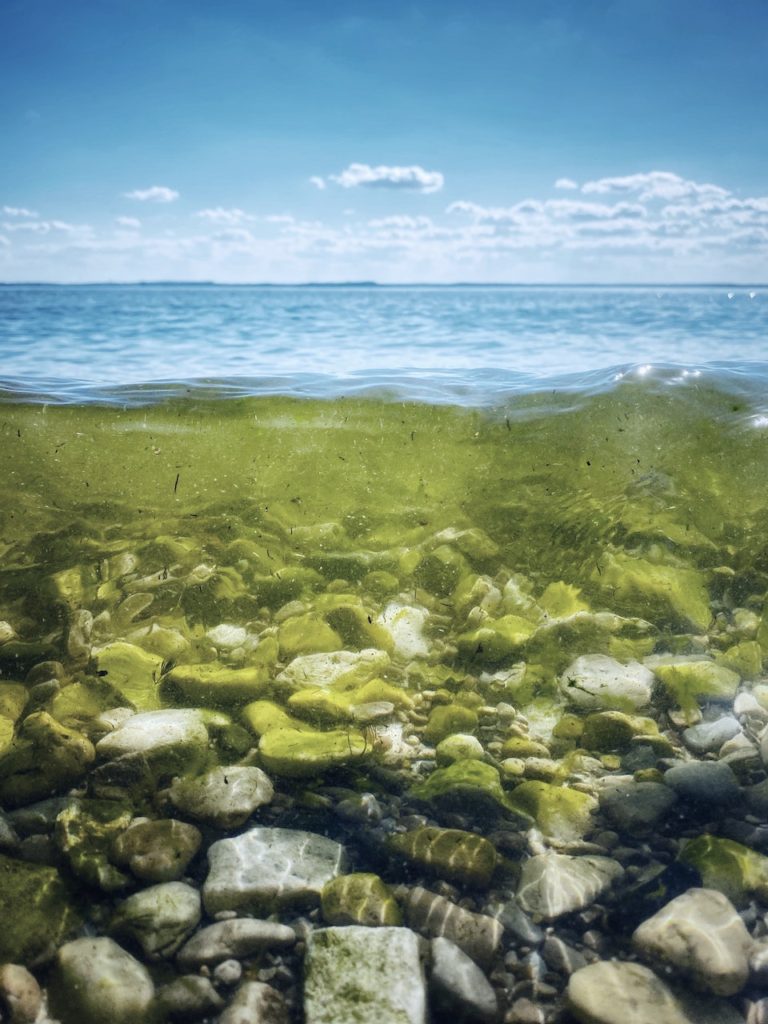
You’re road trippin’ with your dog and you see a beautiful lake just off the highway.
You decide to pull over and stretch your legs. You and your pup walk down to the water’s edge and you notice a blueish-greenish hue swirled around the lake’s surface. It looks almost as if someone spilled paint across the top of the water.
It’s kind of beautiful and a bit mesmerizing. Then suddenly, your dog goes charging full speed into the lake, breaking the marbled surface and your daydream. He’s happily paddling around lapping up water as he goes, while you stand, mouth agape, trying to remember the toxic algae slogan: “When in Doubt, Stay Out!”
What is Toxic Algae?
Before we get into how to convince your dog out of the water and into the vet, let’s first get acquainted with what toxic algae is. Though it’s name and appearance suggest it’s an algae, this is not so. It’s actually a bacteria known as cyanobacteria, or blue-green algae.
And not all of it is toxic. Only some are harmful, but it is impossible to tell by sight alone. Blue-green algae occurs in warmer seasons, in shallow, slow moving water. The bacteria are microscopic, but can be seen when they clump together and create a “bloom”. They look as though they are part of the water and create a pea soup look to the surface.
The blooms are most often blue-green, but can also be reddish or brownish in color. Cyanobacteria occurs when a body of water receives increased nutrients from things like decaying plants and animals or storm runoff. It’s a natural process, can be good for the ecosystem, and the toxins naturally breakaway and the blooms disappear on their own.

When in doubt, stay out
Since it is impossible to tell which blooms are toxic, it’s safest to assume they all are. Toxic algae blooms will make any animal sick if it is ingested, gets on skin, or is inhaled through air droplets. Symptoms vary and include nausea, vomiting, diarrhea, headaches, dizziness, numbness, weakness, disorientation, difficulty breathing, and seizures. Ingestion can also lead to liver poisoning and death.
The best way to avoid contamination is to steer clear! Keep yourself, pets, and livestock away from the water. Skip any aquatic recreation, and don’t use the water for cooking, drinking, or bathing. If the local water supply comes from that lake, avoid it until the blooms clear up.
What to do if your dog has been in contact with toxic algae
If you or your furry loved one comes into contact with a blue-green algae bloom, immediately rinse off and drink fresh water, and head to your nearest doctor or veterinarian. Do not let your pet lick themselves! Symptoms occur anywhere from 15 minutes to a couple of days from contact with the toxic algae.
Do your research before your hike
You can look ahead on your local government’s website to see if there are any posted algae blooms, but not all of them are known. Do not rely on signage to keep you safe. Feel free to contact your local health department if you spot a cyanobacteria bloom. And remember, “When in Doubt, Stay Out!”

